This recipe replaces the traditional pine nuts in pesto with a unique flavor… pistachios! Make this Pistachio Pesto Recipe for a nuttier, slightly sweeter pesto recipe that pairs well with pasta, pizza, proteins, and more.
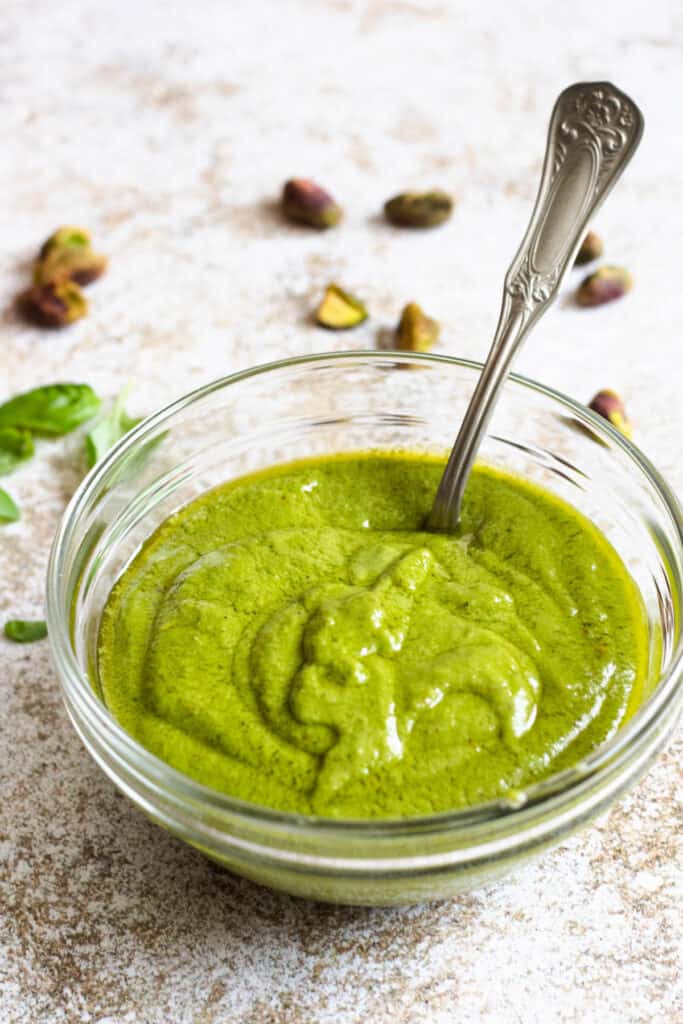
Why Make this Recipe
- Simple: Making this Pistachio Pesto is almost as easy as opening up a jar of the store bought stuff… but so much tastier! Simply add all of the ingredients to a blender, combine, and serve!
- Fresh: There is nothing better than enjoying a homemade sauce with your pasta, especially when it comes with fresh basil! This recipe will bring depth and joy to pasta night!
- Unique Twist: Traditionally, pesto (like this Easy Pesto Recipe) is made with pine nuts. This recipe replaces the pine nuts with pistachios for a nuttier, slightly sweeter flavor you’ll love. Also check out my Walnut Pesto Recipe for another fun twist!
What Do I Need to Make this Recipe
Ingredients

- Basil: Use fresh basil leaves for this recipe
- Parmesan Cheese: I use high quality, freshly grated parmesan cheese. It should be grated finely so that it looks like snow. This is worth splurging on for a great recipe.
- Lemon Juice: I use a freshly squeezed lemon, but you can also use prepackaged juice if preferred
- Pistachios: Choose unroasted, unsalted pistachios without shells. If you are having a difficult time finding these, you can use roasted pistachios. The key here is no additional salt. (These Pistachio Cookies are my FAVORITE pistachio recipe).
Tools
- Blender/Food Processor
- Measuring Cups
- Measuring Spoons
How to Make this Recipe
Step 1: Blend the Pistachio Pesto
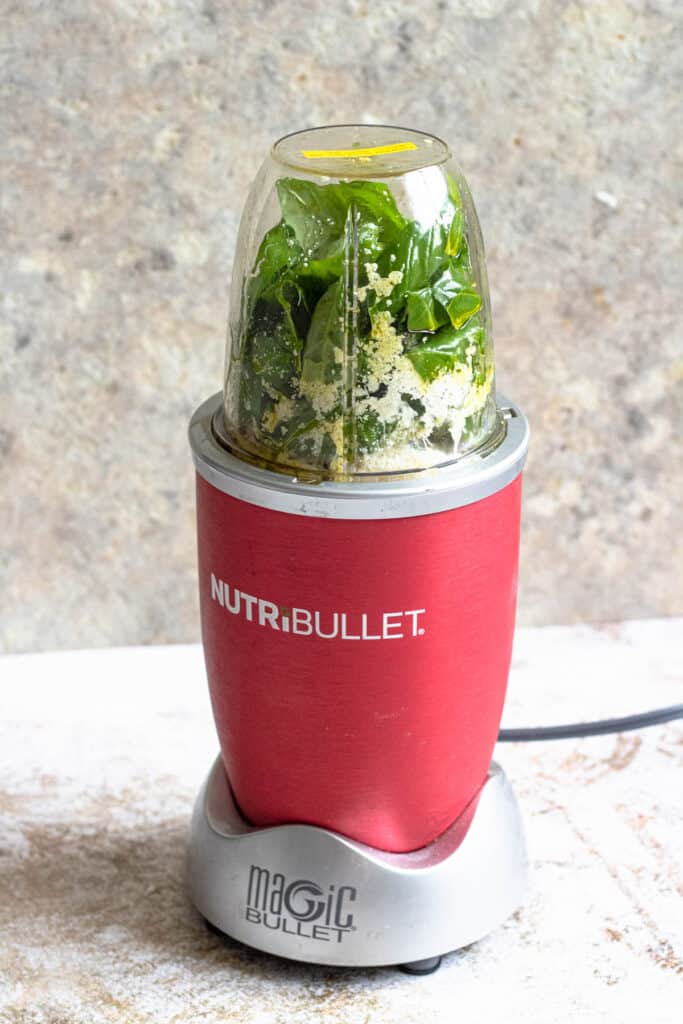
Add all ingredients (including pistachios) into a blender and blend. Add more olive oil incrementally if the pesto needs to be thinner.
Expert Tips

- If you want some extra lemon flavor, you can zest the lemon peel into the pesto as well
- If you don’t like pistachios, you can use walnuts, almonds, pine nuts, macadamia nuts, pecans, or anything else that sounds delicious
- You can make the pesto with a mortar and pesto for a more traditional texture, but if you want a thinner texture, a blender is a great way to prepare it.
- You can preserve pesto by freezing it. If you want to freeze individual portions (to add to a serving of pasta, etc) you can freeze the pesto in an ice cube tray. After frozen, pop the pesto cubes out and store them in a plastic bag.
- If your pesto tastes too olive-oily, allow it to rest for a few minutes before serving. When olive oil warms up, its taste gets a lot stronger. A room temperature pesto on warm pasta will be a great combo if you don’t like a strong olive oil taste.
Recipe FAQs
How to Store this Recipe?

You can store your pesto in a glass jar with an airtight lid on it. The pesto will stay good in the fridge for 3-5 days.
When it is time to serve, you can heat it up in the microwave, leave it out until it comes to room temperature, or serve it cold.
How to Freeze Fresh this Recipe?
If you want to freeze a large portion of pistachio pesto, you can do so in a glass jar with an airtight lid on it. This will stay good in the freezer for up to 9 months.
You can also freeze the pesto in small, individual servings. For this, pour the pesto into an ice cube tray and allow the individual cubes of pesto to freeze. Once frozen, remove them from the tray and put them in a plastic bag in the freezer. Take out individual servings when necessary.
What Can I Use this Recipe For?
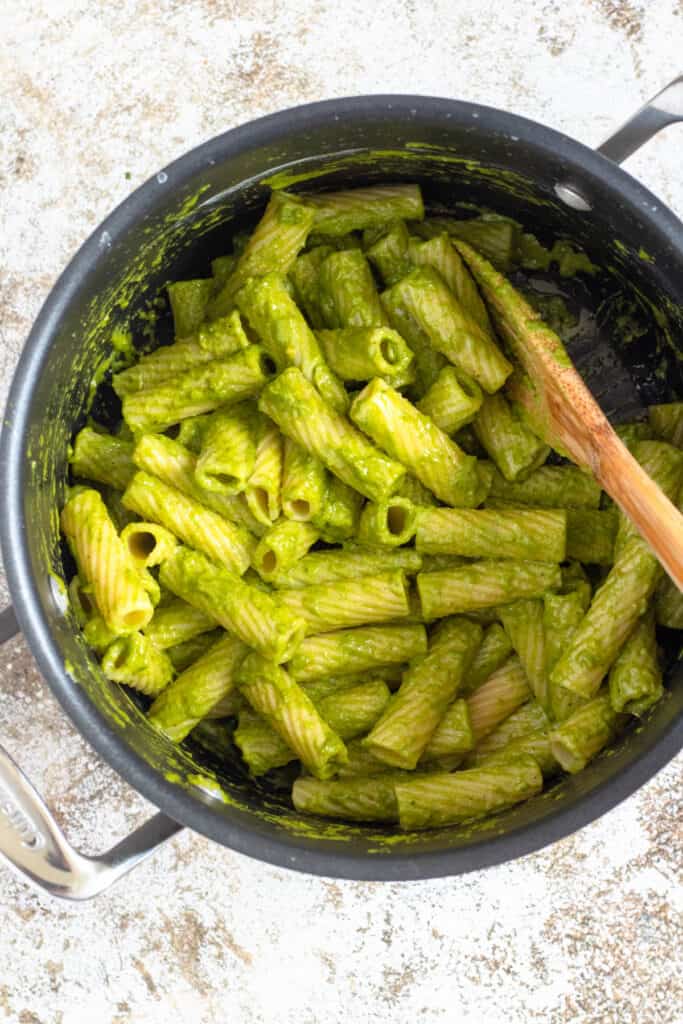
There are so many things that you can use this recipe for! Some great options include:
- Gnocchi
- Creamy Pesto Pasta
- Pasta Salad
- Pizza
- Basil Pesto Chicken
- Scrambled Eggs
- Bake into Bread
- Shrimp and Ricotta Pasta Bake
- So Much More!!
Did you enjoy this recipe for Pistachio Pesto? If so, make sure to check out these other recipes I picked out just for you:
- Instant Pot Pasta with Palomino Sauce
- Easy Pasta Sauce Recipe
- The Best Vodka Sauce Recipe
- Fata (Spicy Tomato Sauce) from Eritrea
- Homemade Pizza Sauce Recipe
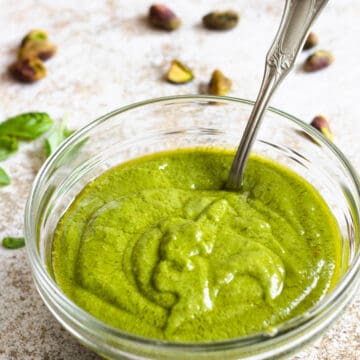
Pistachio Pesto
Equipment
- Food Processor/Blender
- Citrus Juicer
Ingredients
- 2 cups fresh basil
- ¼ cup Parmesan cheese, finely grated
- Juice of ½ lemon
- 1 tsp Garlic
- ½ tsp salt
- ¼ cup + 2 tbsp olive oil
- ¼ cup pistachios, with no shells, unroasted, unsalted
Instructions
- Add all ingredients (including pistachios) into a blender and blend. Add more olive oil incrementally if the pesto needs to be thinner.
Notes
- Basil: Use fresh basil leaves for this recipe
- Parmesan Cheese: I use high quality, freshly grated parmesan cheese. It should be grated finely so that it looks like snow. This is worth splurging on for a great recipe.
- Lemon Juice: I use a freshly squeezed lemon, but you can also use prepackaged juice if preferred
- Pistachios: Choose unroasted, unsalted pistachios without shells. If you are having a difficult time finding these, you can use roasted pistachios. The key here is no additional salt.
- If you want some extra lemon flavor, you can zest the lemon peel into the pesto as well
- If you don’t like pistachios, you can use walnuts, almonds, pine nuts, macadamia nuts, pecans, or anything else that sounds delicious
- You can make the pesto with a mortar and pesto for a more traditional texture, but if you want a thinner texture, a blender is a great way to prepare it.
- You can preserve pesto by freezing it. If you want to freeze individual portions (to add to a serving of pasta, etc) you can freeze the pesto in an ice cube tray. After frozen, pop the pesto cubes out and store them in a plastic bag.
- If your pesto tastes too olive-oily, allow it to rest for a few minutes before serving. When olive oil warms up, its taste gets a lot stronger. A room temperature pesto on warm pasta will be a great combo if you don’t like a strong olive oil taste.




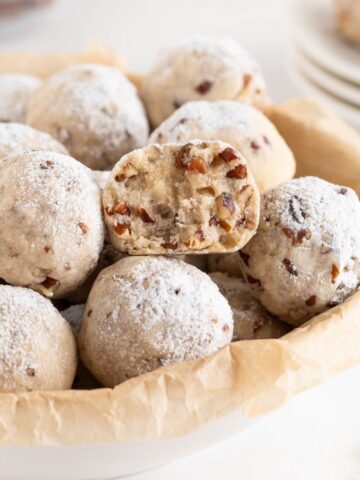

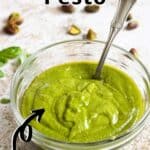



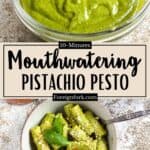
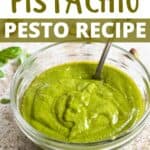
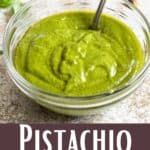




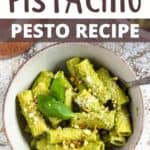
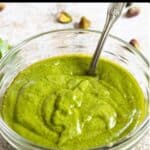
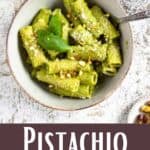
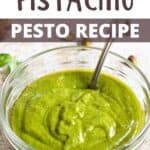
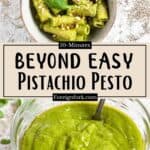
Leave a Reply